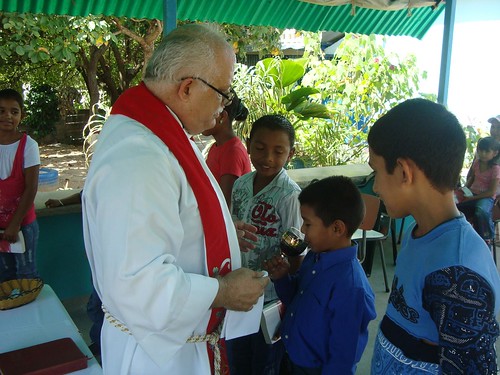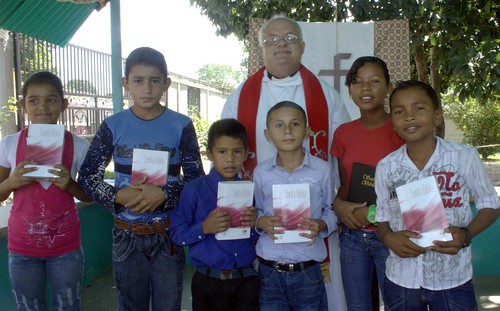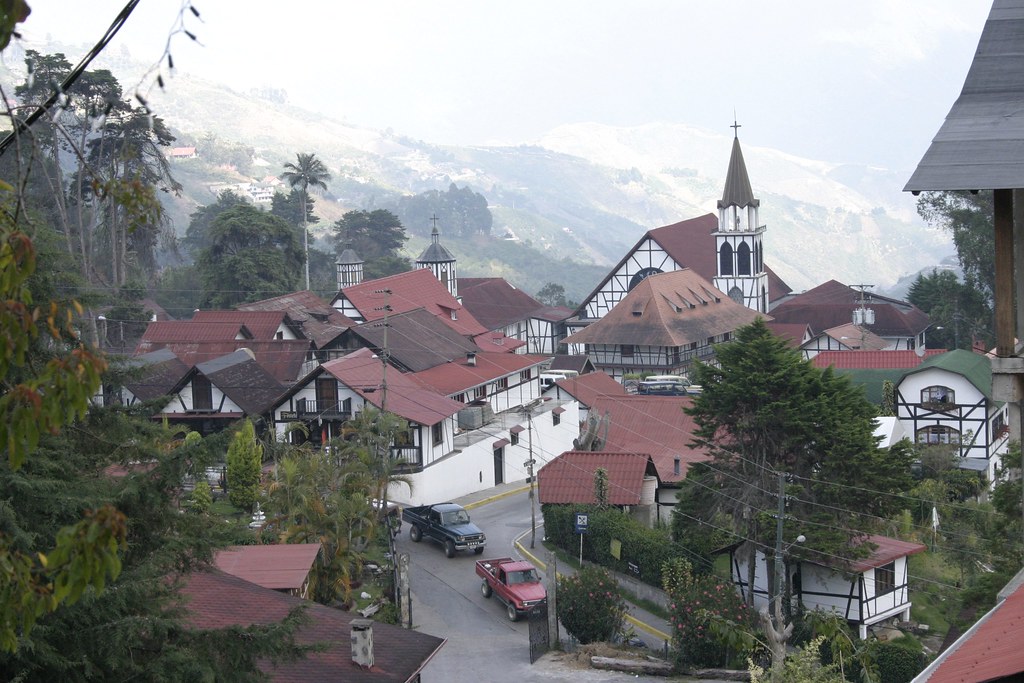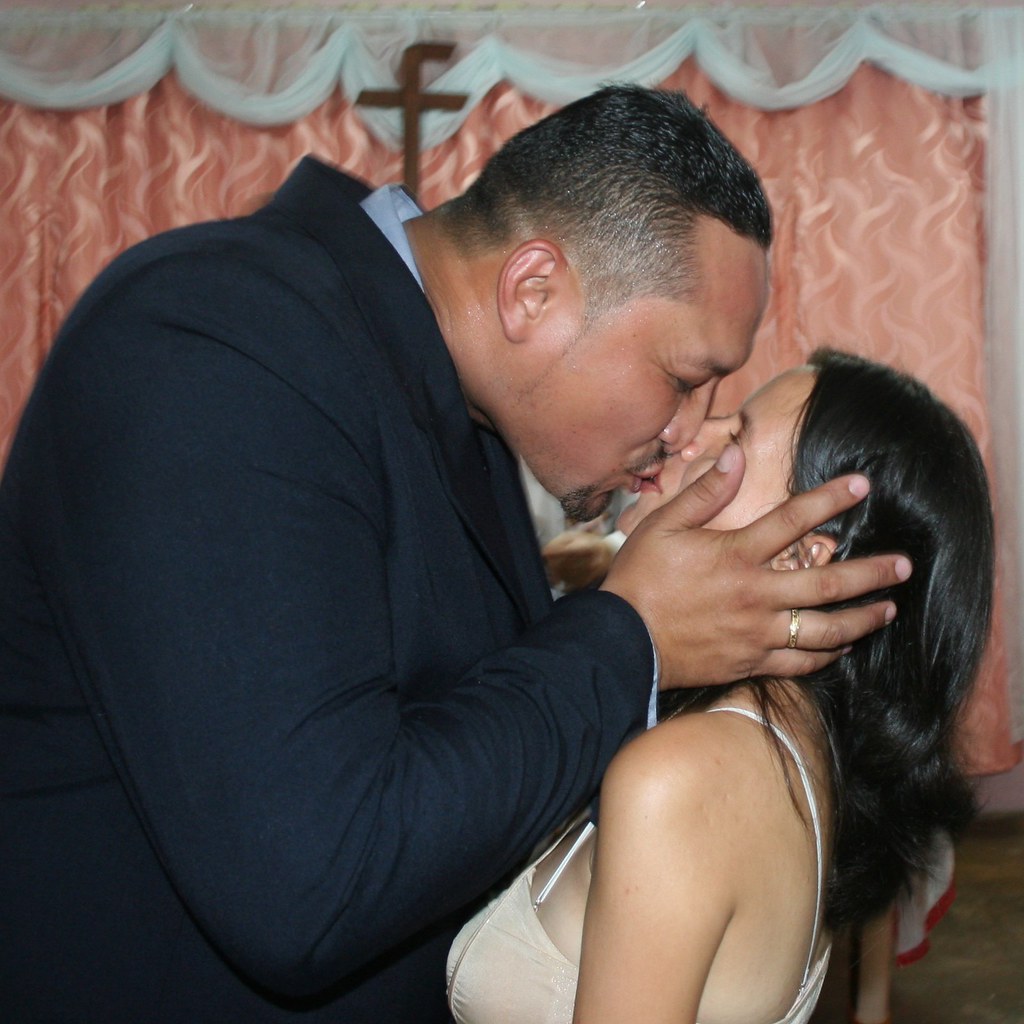
Six young people were confirmed at our mission on Oct. 31, 2010. Here is the list of their names and confirmation verses:
- Jeison Manuel Arellano Farías, Philippians 4:7
- Jimmy Orlando Pérez Chinchilla, Joshua 1:9
- Angie Yoximar Pérez Chinchilla, John 10:27-28
- Yhonny Alexander Torres Ortega, Philippians 4:13
- Pedro José Santana Reimi, Psalm 50:15
- Karelis Santana Reimi, Psalm 51:10
Today, Reformation Sunday, is a day of confession in two ways.
First, the confession of our sins. Every Sunday we begin the Divine Servie with the general confession of sins and receive absolution before the sacrament of the Lord's Supper. This is the day of first communion for six of you.
These six have been instructed according to the Small Catechism of Martin Luther, so they understand the importance of confession and repentance of all immorality and false belief before receiving the true body and true blood of Jesus Christ in, with, and under the bread and wine. Because he does not believe the words “given for you” or “shed for you for the forgiveness of sins,” or doubts them, is not worthy, nor is ready to receive Christ's body and blood. As St. Paul says, “Let a person examine himself, then, and so eat of the bread and drink of the cup. For anyone who eats and drinks without discerning the body eats and drinks judgment on himself” (1 Corinthians 11:28-29).
By confession, we also mean public confession of the faith. In today's text (John 8:31-36), our Lord tells us, “If you abide in my word, you are truly my disciples, and you will know the truth, and the truth will set you free.” The freedom Christ speaks of is freedom from sin. The truth of Christ, that is to say, His sacrifice on the cross, frees us from slavery to sin and Satan. Christ paid the price for the sins of the whole world on the cross, and so we are justified by faith in Him, and not by our own works. However, to remain true disciples of Christ, we must abide in His Word.
In holy baptism we received the complete assurance of eternal life in Christ and began the life of faith, we were born again of the Holy Spirit. Baptism was our first confession of faith by the work of the Holy Spirit. As it says in Mark 16:16, “He who believes and is baptized, will be saved; but he does not believe, will be condemned.” In baptism we receive the gift of saving faith.
But, it is possible to lose the benefits of baptism, if we do not abide in the Word of God. We have this Word in the Holy Scriptures, the source and rule of our faith. The Scriptures, written by the apostles and the prophets, and inspired by the Holy Spirit, tell us all that we need to know for our salvation. In the Bible, God speaks to every one of us.
But abiding in the Word is not just a matter of listening, reading and reflecting inwardly. The Word at times demands a verbal response.
For it also is the work of the Holy Spirit when we say “I believe” in the Word of God. As St. Paul writes in 1 Corinthians 12:3, “No one can say Jesus is Lord, except by the Holy Spirit.”
Also, when Simon Peter said, “You are the Christ, the son of the living God,” our Lord replied, “Blessed are you, Simon, son of Jonah; for flesh and blood has not revealed this to you, but My Father, Who is in heaven” (Matthew 16:17).
On the day of their wedding, a bride and groom promise each other to love and live together until death. But, for them to fulfill this commitment, it will be necessary, at times, to reaffirm these vows in the years to come, in times of joy or grief. What do you think, should it be sufficient for a man and wife to say to each other, “I love you” on their wedding day and never again? For a man to kiss his wife on the wedding day and never again? Of course not!
In the same way, the promise of salvation and faith that we receive in baptism is for always. But a times we must reaffirm our trust in the Word of God, not just to reinforce our own faith, but to testify of Christ's truth to the world.
That is why on October 31, 1517, Martin Luther nailed his 95 Theses on the door of the castle church in Wittenberg, Germany, calling the church back to the basic truths of the Holy Scriptures: justification by faith alone, salvation by grace alone and the Scriptures as the only infallible rule of faith. Later, Luther, a simple German monk, stood before Charles V, in his day emperor of all Europe and as King of Spain, ruler of the Spanish colonies in the New World, including Venezuela, and representatives of the Roman church and the empire and confessed this faith.
 |
| Karelis, Pedro, Jeison, Yhonny, Angie, Jimmy. |
In your confirmation today, six of you will publicly confess the faith in which you were baptized. Let us thank God that we live in a country where there is freedom of conscience, so that you do not confess under pain of death at this very moment. However, as you have abided in the Word of God until this moment, you must testify to its truth with your lips. Also, today we remember Luther and others who risked their lives for the pure doctrine of the Bible and express our solidarity with believers in countries where Christians are persecuted.
May God bless you richly on this Reformation Day, and this day of your first communion. Amen.





![Reblog this post [with Zemanta]](http://img.zemanta.com/reblog_e.png?x-id=ebb7df21-2ee5-4238-8b64-32fcb4e69e5b)





![Reblog this post [with Zemanta]](http://img.zemanta.com/reblog_e.png?x-id=150ac9e3-5190-4c37-8337-6e4564b64b15)




